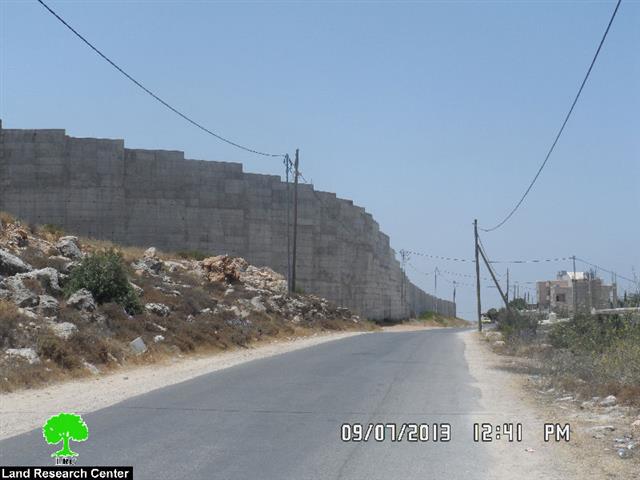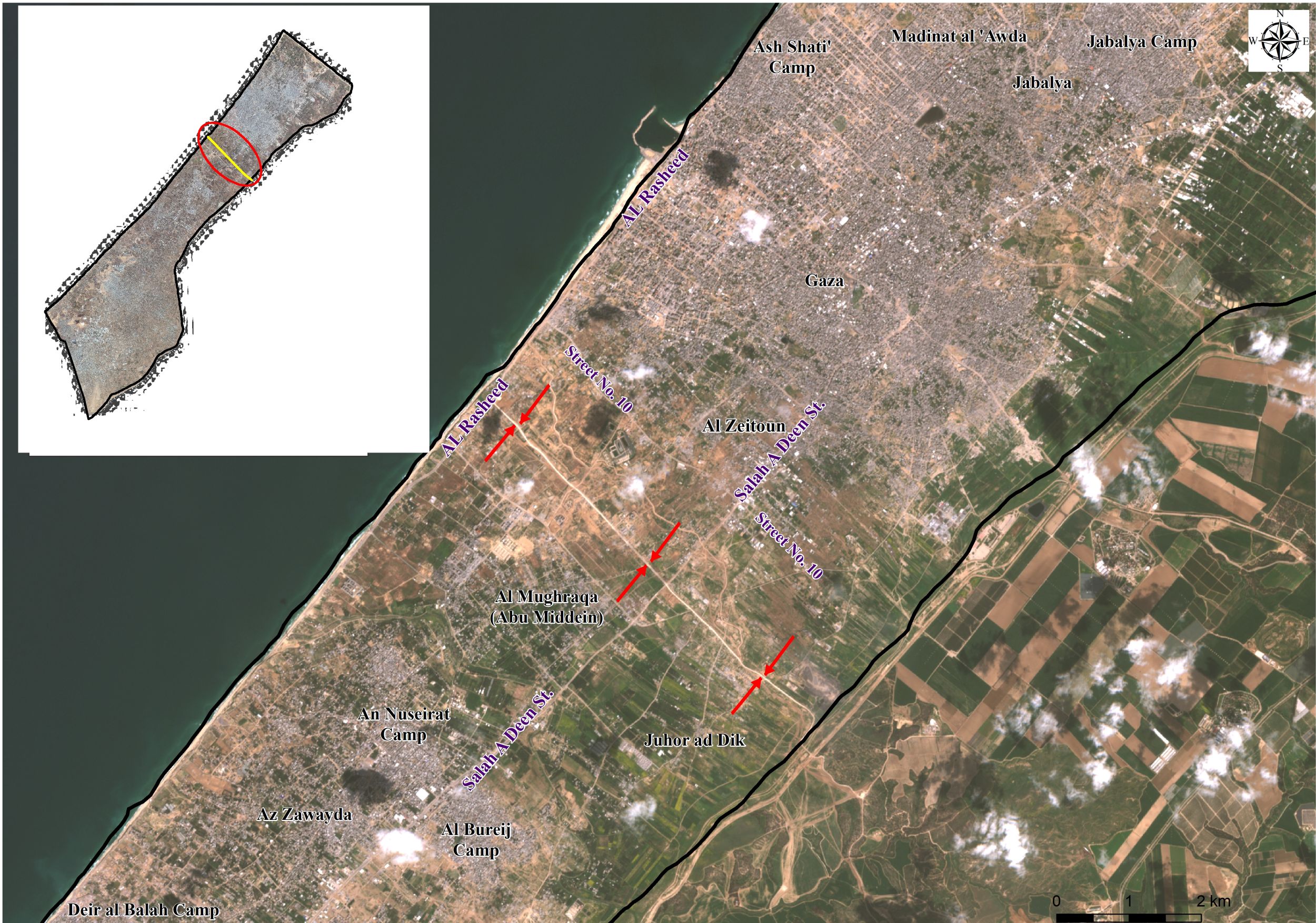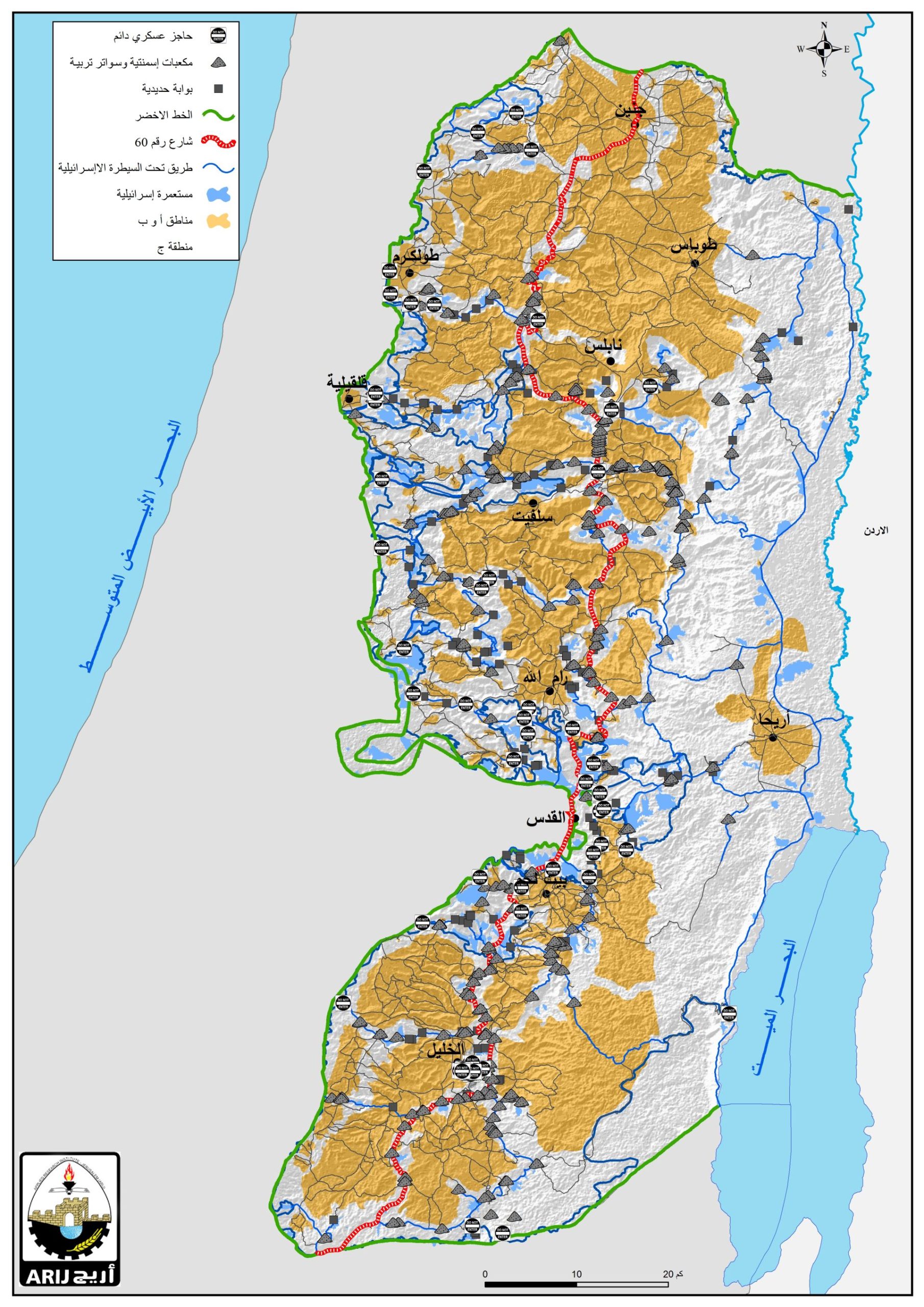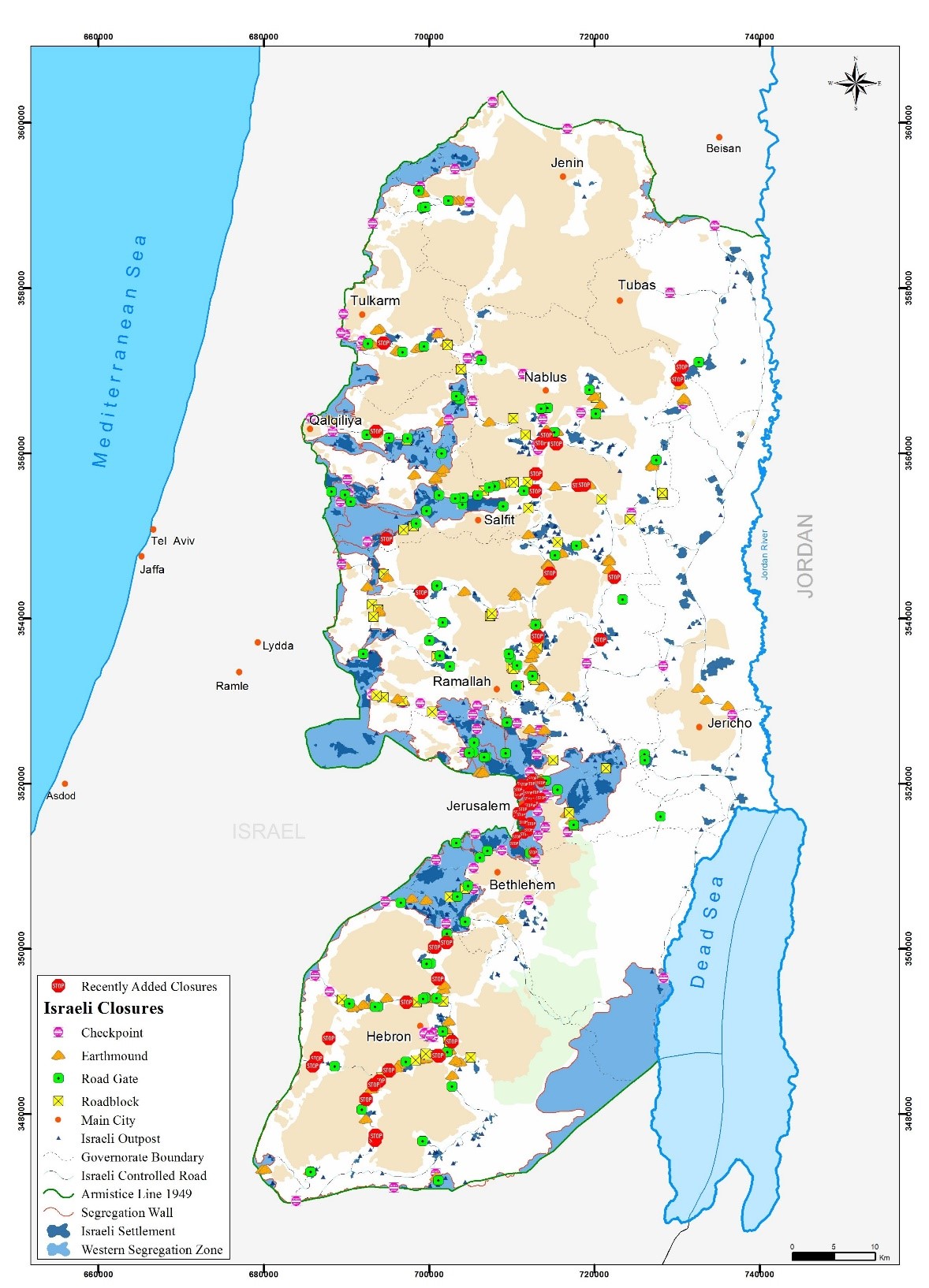Al-Walaja village besieged by the segregation wall and other colonial plans
Since 1948 and until the present time, the village of al-Walaja has been going through the Israeli everlasting greed. 8.5km southwest Jerusalem and 5.4km west of Bethlehem , the village is located with a total land area of 17793dunums of which 11793 were confiscated by the Israel through the truce between Israel and the Jordanian Arab side under the auspices of the British. In 1967, the total land area of al-Walaja became 6000dunums of which 500dunums were confiscated to open a bypass road in 1996 and 1000 dunums were also confiscated for the favor of Gilo colony in the years between 1969-1997. As a result, the total area that remained for the village is 4500dunums, which is under the threat of confiscation for the favor of the apartheid wall that has already confiscated hundreds of dunums planted with olives and almonds.
The apartheid wall deprives farmers from their fertile lands:
The village of al-Walaja became totally isolated from Bethlehem after the wall surrounded it from the north, east and west and soon from the south. Therefore, the entrance of the village will be next to the entrance of Har Gilo colony and that according to the wall's plan, the village's entrance will be closed in any time declaring al-Walaja a besieged area.
The segregation wall caused damages to the psychology of the residents as a result for its establishment. According to the Geographic Information System GIS at Land Research Center LR, the wall has segregated around 1585 dunums behind it and damaged 334 dunums under it( as for its construction).
The negative effects of the segregation wall on the residents are as follows:
Physically: dust arising from the digging and exploding caused problems on the neighboring peoples' health, especially those who suffer from Asthma. Air also got polluted as a result.
Pedagogically: students' desire for education is relatively decreasing whereas ditching rate is increasing notably. For example, the route of Salesian nuns school became of double distance as opposed to the time before. Transportation expenses also increased because of the far distance of the schools.
Economically: the segregated lands behind the wall were planted with different trees and were considered as a source of income for many of the village's residents who now cannot access their lands except occasionally under complicated procedures. Workers who have jobs within the areas separated by the green line have difficulties now reaching their jobs as a result.
Environmentally: having the wall built in that area affected the natural look and scenery in a negative way and deprived people from pure air. Different trees that helped producing air and beautifying the place were uprooted and cut off. Visitors of the area considered al-Walaja as a breather where they can picnic and enjoy the captivating nature of the location. Photos of the apartheid wall that besieged the village:
A new part of the wall that will confiscate hundreds of agricultural dunums
The segregation wall around al-Walaja with a scene of Gilo in the background
The family of al-Hajajlih got segregated behind the wall from the rest of the village and the residents:
On the eastern entrance of the village and by the end of Krimzan street, there is a besieged residence by a wall and an iron gate. The house is owned by Omar Hajajlih(44) and his family( 5 members including 3 minors). The family has been undergoing frequent violations and assaults by the occupation for the sake of displacing them. Noteworthy, the family still insists on staying in the place for it is their property.
The residence is few meters away from the wall and is segregated behind it. The occupation refuses giving the family blue IDs( IDs for the Israeli territories) that give them freedom of movement.
An aerial image of al-Hajajlih residence
The occupation put so much pressure on citizen Omar Hajajlih since the construction of the wall in order to make him leave his lands but he did not even accept to discuss or argue with them about the issue despite being harassed repeatedly.
A tunnel for Hajajlih family:
The occupation found out a solution to the family's stuck issue, which is to open a tunnel , connecting the residence with the village. As a result, the house became" out of time and space". The so-called solution only satisfied the occupation but harmfully affected the aggrieved family.
the tunnel that links the residence with the village
Complex restrictions to reach the besieged house:
After having the tunnel opened, an iron gate was set up at the beginning of it and a key was given to the owner of the house. Visitors were only allowed in by specific permit from the Civil Administration( to be obtained 48 hours in advance) during specific hours. No cars but the owner's one are allowed in the street. If did not abide to the conditions, the occupation will take control of the gate and withdraw the key from the family of Omar Shananir. Apparently , the family is living in a closed jail with restrictions, which harden their lives continuously. Noteworthy, the family suffered from the dust coming out at time of building the wall, taking in consideration that digging and exploding were the two techniques used in the operation. Kids were harmed by the polluted air and the dust inhaled from it. This instability alongside with the psychological pressure caused by surrounding wall have been affecting the family in the worst way ever imagined.
It should be also marked that the family of Shananir sought many Human rights organizations and courts but with no result to be rendered. Nonetheless, the occupation insists on building the segregation wall not caring about a family or even a whole nation misery.
The surrounded house of Hajajlih
Israeli violations against al-Walaja in 2013:
Eviction order:
On 25/05/2013, the supreme unit of inspection notified Shihada family with eviction from their land that is located in al-Walaja. After examining the attached map to the order, the Geographic Information System team GIS concluded that the total area of the land is 22 dunums. Noteworthy, the land overlooks the whole village and was going under a reclamation project at that time.
It should be marked that the owners of the land submitted an objection on the order to the Civil Administration in Etzion via a human rights organization. The objection is still to be looked at; ignored in other words.
Setting fire to 400 trees:
On 20/07/2013, colonists set fire to olive trees in the lands of al-Walaja village, southwest of Bethlehem.
The member of Committee Against the Wall and Settlement Muhammad Hamdan stated that a number of colonists set fire to an olive filed located in the area of " Helat Kidis". 400 trees belonging to the heirs of the deceased Ali, Hamdan and Ibrahim Hamdan were burned down as a result.
He also added that the residents alongside with the fire department staff rushed to extinguish the fire. Soldiers' violations and assaults have recently escalated on citizens and their properties for the sake of displacing them and exploiting their lands for colonial plans.
Approval on a plan to establish a national park " Emik Raf'em", which will confiscate hundreds of segregated dunums behind the apartheid wall:
The Planning Committee of the occupation in Jerusalem approved on establishing a national park named "Emik Raf'em" on the lands of al-Walaja village. The area of the planned park is 5680 dunums of which 1500 dunuums will be taken from the confiscated lands of al-Walaja.
The chair man of al-Walaja village council to the LRC researcher stated the following:
"there was a court session on 20/06/2013 to which we were summoned to receive the decision on the establishment of the new park. The session was nothing but a fraud scenario since the decision was taken beforehand. As a result, verbal altercations took place between the judge and us for we were upset about this cruel verdict".
The targeted lands are owned by farmers of the village, most of which are planted with olive and are considered the only breather for the residents. This plan shocked all citizen of the area for those targeted lands are located out of the green line(the line separating the occupied lands "Israel" from the West Bank).
The plan of the national prak "Etik Raf'em" that targets al-Walaja and the villages of Occupied Jerusalem
The Hebrew media posted photos and master plans, announcing the colonial plan that targets the villages of Walaja in Bethlehem and Sharafat and Beit Safafa in Occupied Jerusalem.
Prepared by
The Land Research Center
LRC


























